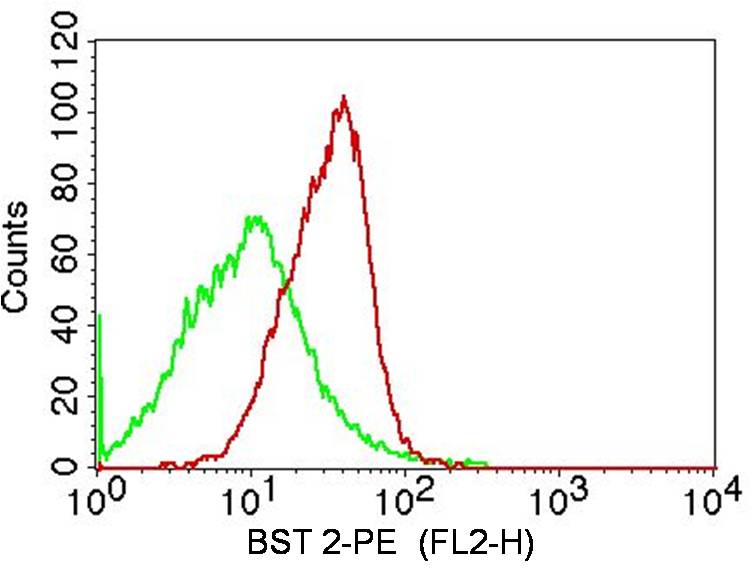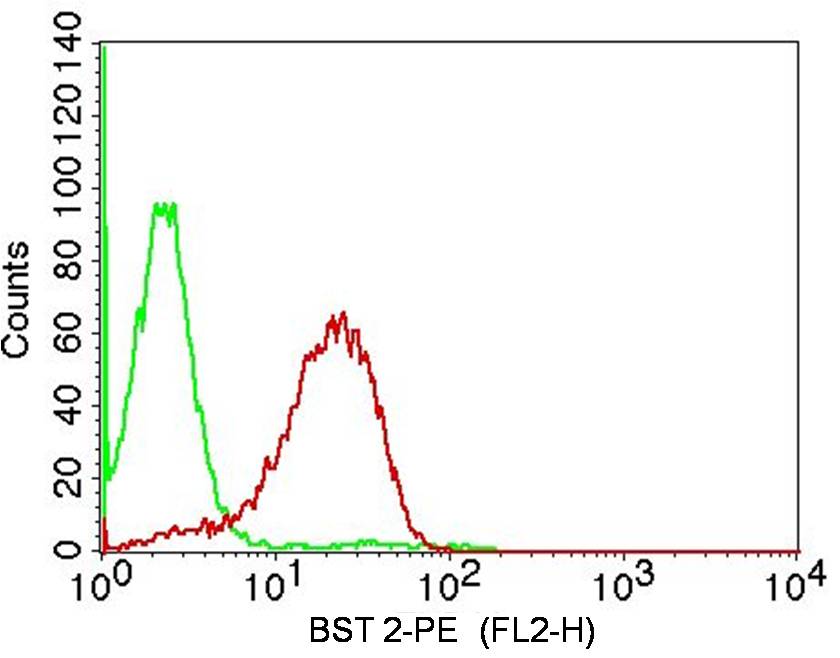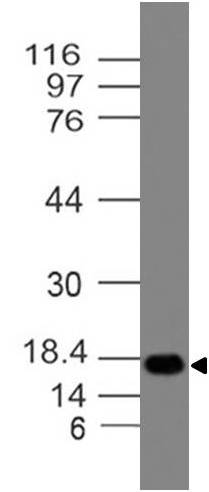Monoclonal Antibody to BST 2 (Clone: ABM52D8)

Fig-1: Cell surface flow analysis of BST2 in PBMCs (lymphocytes gated) using 0.5 µg/10^6 cells of antibody (Clone: ABM52D8). Green represents isotype control; red represents anti-BST2 antibody. Goat anti-mouse PE conjugate was used as secondary antibody. (Cells were incubated with primary antibody for 45 min. then washed twice with PBS by centrifuging at 1100 rpm for 5 min, followed by 30 min incubation with conjugated secondary antibody. Data acquisition was done after washing twice with PBS as mentioned above).
Roll over image to zoom in
Shipping Info:
Order now and get it on Friday April 25, 2025
Same day delivery FREE on San Diego area orders placed by 1.00 PM
| Format : | Purified |
| Amount : | 100 µg |
| Isotype : | Mouse IgG1, kappa |
| Purification : | Protein G Chromatography |
| Content : | 25 µg in 50 µl/100 µg in 200 µl PBS containing 0.05% BSA and 0.05% sodium azide. Sodium azide is highly toxic. |
| Storage condition : | Store the antibody at 4°C, stable for 6 months. For long-term storage, store at -20°C. Avoid repeated freeze and thaw cycles. |
BST2 (Bone Marrow Stromal Antigen 2), a type II transmembrane protein also known as HM1.24/CD317, has been identified to be overexpressed in a variety of cell lines from different cancer types, including multiple myeloma, breast, lung, and kidney cancers. BST2 was discovered as a marker of differentiated B cells and was later rediscovered as a potent antiviral restriction factor with the ability to tether enveloped viruses to the cell membrane of infected cells via its GPI anchor as well as to potently inhibit virus replication in cultured cells and in vivo. It also acts as an innate immune sensor of HIV-1 that elicits an inflammatory response upon exposure. BST2 mediate host immune response by activating NF-KB through interaction with TAK1 (Transforming Growth Factor Beta-Activated Kinase 1) and TNF receptor associated factors (TRAFs) 2 and 6. In addition, BST2 induces ADCC (antibody-dependent cell cytotoxicity) against the envelope protein of HIV. BST2 was expressed constitutively on the cell surface of both CD3− and CD3+ thymocytes ex vivo.
WB: 2-4 µg/ml, FACS: 0.5-1 µg/10^6
For Research Use Only. Not for use in diagnostic/therapeutics procedures.
| Subcellular location: | Golgi apparatus, Cell membrane, Cell membrane, Late endosome, Membrane raft, Cytoplasm, Apical cell membrane |
| Post transnational modification: | The GPI anchor is essential for its antiviral activity. |
| Tissue Specificity: | Predominantly expressed in liver, lung, heart and placenta. Lower levels in pancreas, kidney, skeletal muscle and brain. Overexpressed in multiple myeloma cells. Highly expressed during B-cell development, from pro-B precursors to plasma cells. Highly expressed on T-cells, monocytes, NK cells and dendritic cells (at protein level). |
| BioGrid: | 107149. 16 interactions. |
|
There are currently no product reviews
|



















.png)










